Overview
The article delineates ten pivotal benefits of employing brushless DC fans in electronics design, underscoring their energy efficiency, quiet operation, durability, compactness, versatility, and advanced control options. These attributes establish brushless DC fans as the quintessential choice for engineers, as they not only augment thermal management and curtail operational costs but also resonate with the escalating demand for energy-efficient and reliable cooling solutions in contemporary electronic applications.
Introduction
The evolution of cooling technology has fundamentally transformed the landscape of electronics design, with brushless DC fans emerging as a pivotal advancement in the industry. These innovative devices not only promise energy efficiency and quiet operation but also deliver remarkable longevity and versatility, making them indispensable for modern applications.
As engineers confront the complexities of integrating these advanced solutions, they may find themselves questioning: what specific advantages do brushless DC fans provide, and how can they optimize performance while managing costs?
This article explores ten key benefits of brushless DC fans, illuminating their essential role in enhancing electronic systems.
Gagner-Toomey Associates: Innovative Cooling Solutions for Electronics Projects
Gagner-Toomey Associates stands at the forefront of delivering tailored specifically for the electronics industry. By presenting a diverse selection of premier manufacturers, including Delta, the company ensures that engineers have access to , such as and an extensive range of . These devices are crucial for maintaining optimal operation in electronic systems, especially in scenarios where is essential.
Gagner-Toomey’s portfolio features both standard and , including:
- DC input tube axial units ranging from 15 to 280mm
- from 15 to 225mm
All optimized for superior performance, efficiency, and low noise. With their profound expertise in cooling technologies, Gagner-Toomey Associates emerges as a trusted partner for engineers in search of reliable solutions, including and custom designs, tailored to meet the rigorous demands of modern electronics design.
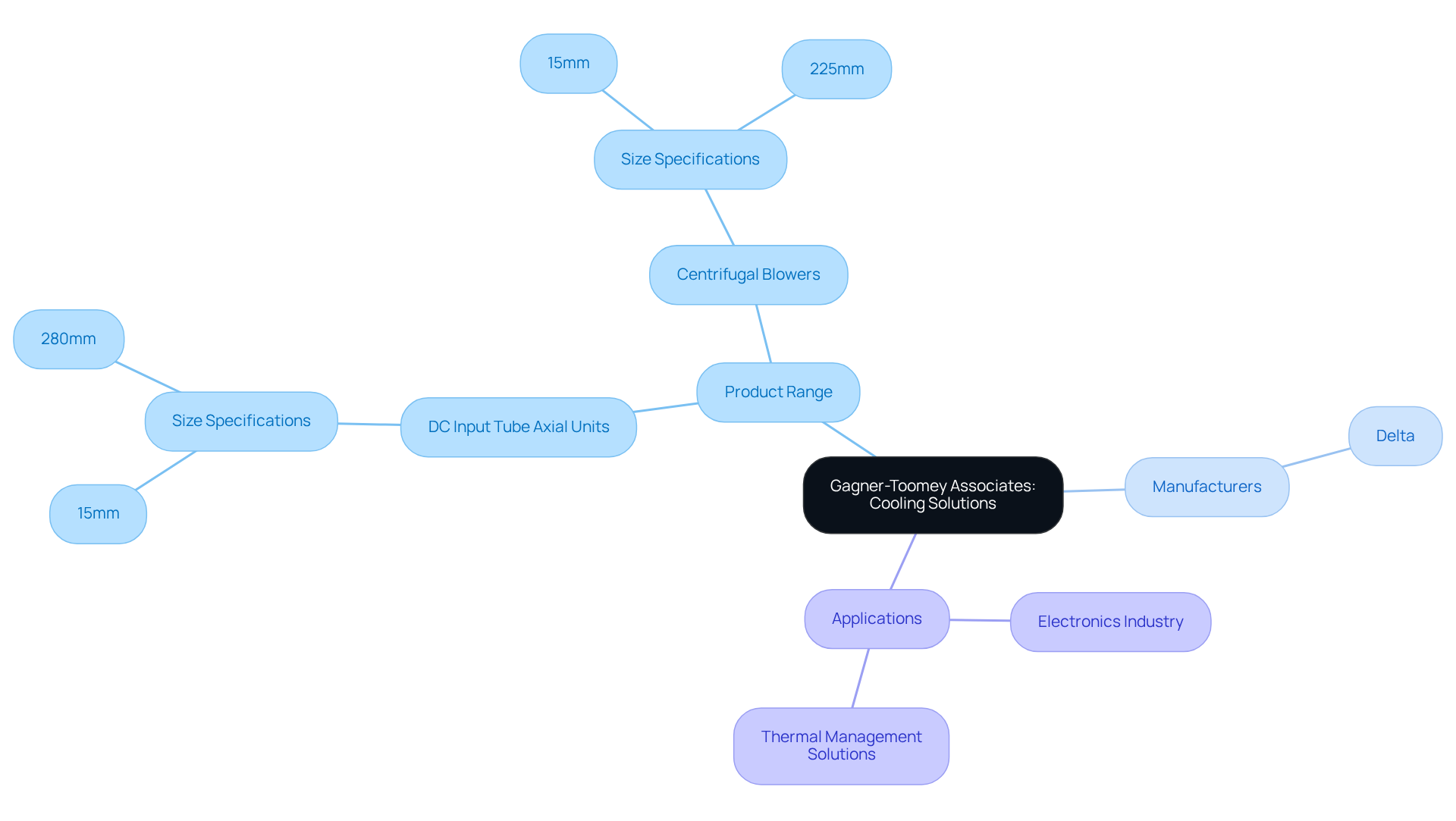
Energy Efficiency: Reduce Power Consumption with Brushless DC Fans
are distinguished by their exceptional , consuming significantly less power than conventional AC devices. This substantial reduction in power consumption not only results in but also contributes to a . Engineers are empowered to leverage this efficiency in designing systems that comply with stringent energy regulations while simultaneously enhancing overall performance. The inherent in brushless DC fans minimizes , making them the ideal choice for modern electronics.
Gagner-Toomey Associates, a leading producer of , offers an extensive selection of , including both standard and custom DC units, further promoting across medical, industrial, and server applications.
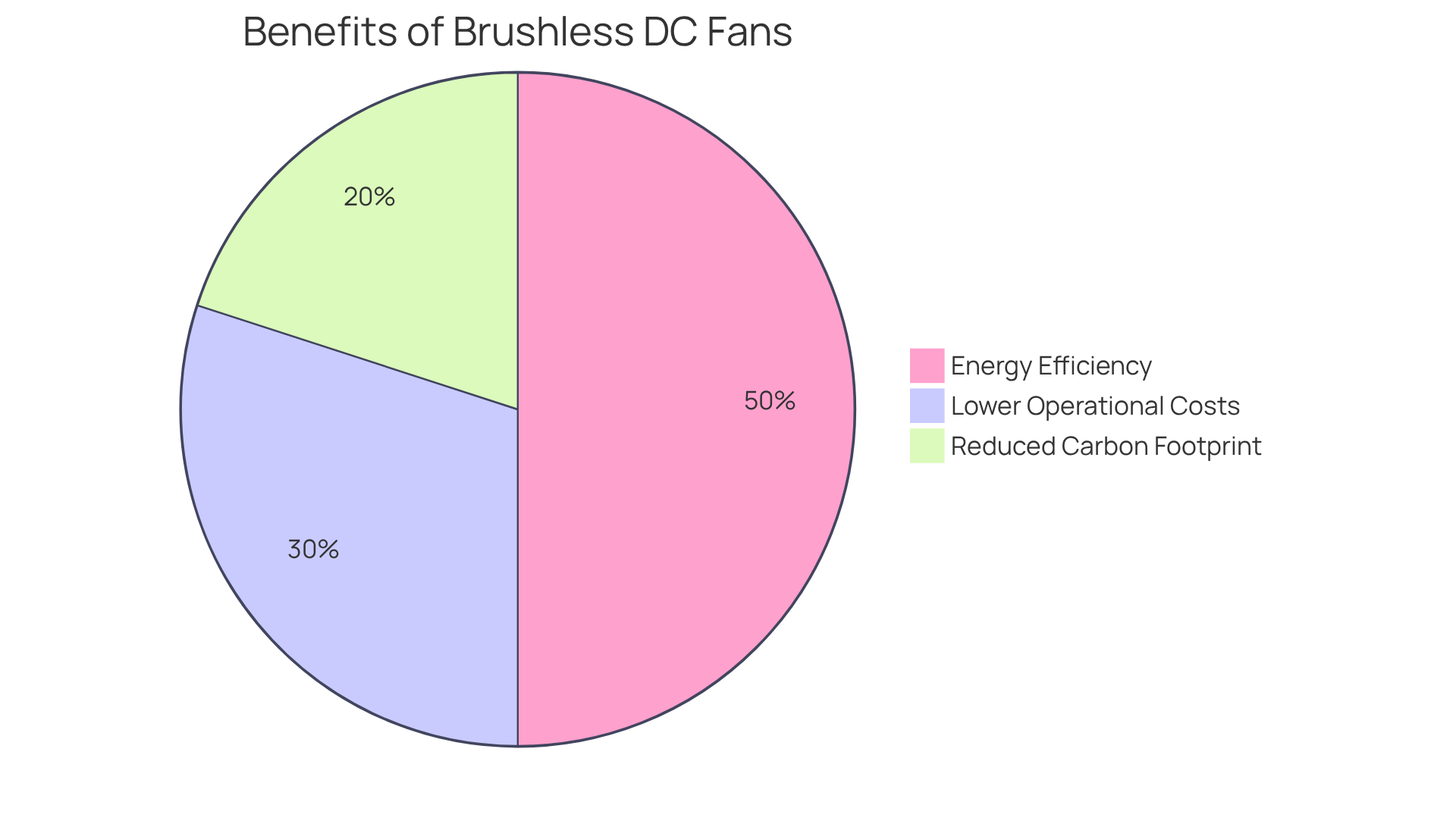
Quiet Operation: Minimize Noise in Sensitive Electronics Applications
The brushless DC fan units are renowned for their remarkably , a stark contrast to conventional devices that generate significant noise due to mechanical friction. This silent functionality is essential in , such as medical devices and audio equipment, where even minimal noise can disrupt performance. Research indicates that many sensitive applications require sound levels below 30 decibels to function optimally, highlighting the in electronics design. By utilizing a brushless DC fan, engineers can achieve a , significantly enhancing user experience.
Moreover, these devices consume 50-65% less , further increasing their appeal within the industry. The integration of not only but also aligns with the growing demand for . However, it is crucial to recognize that sourcing can pose a challenge, which should be carefully considered when adopting this technology.
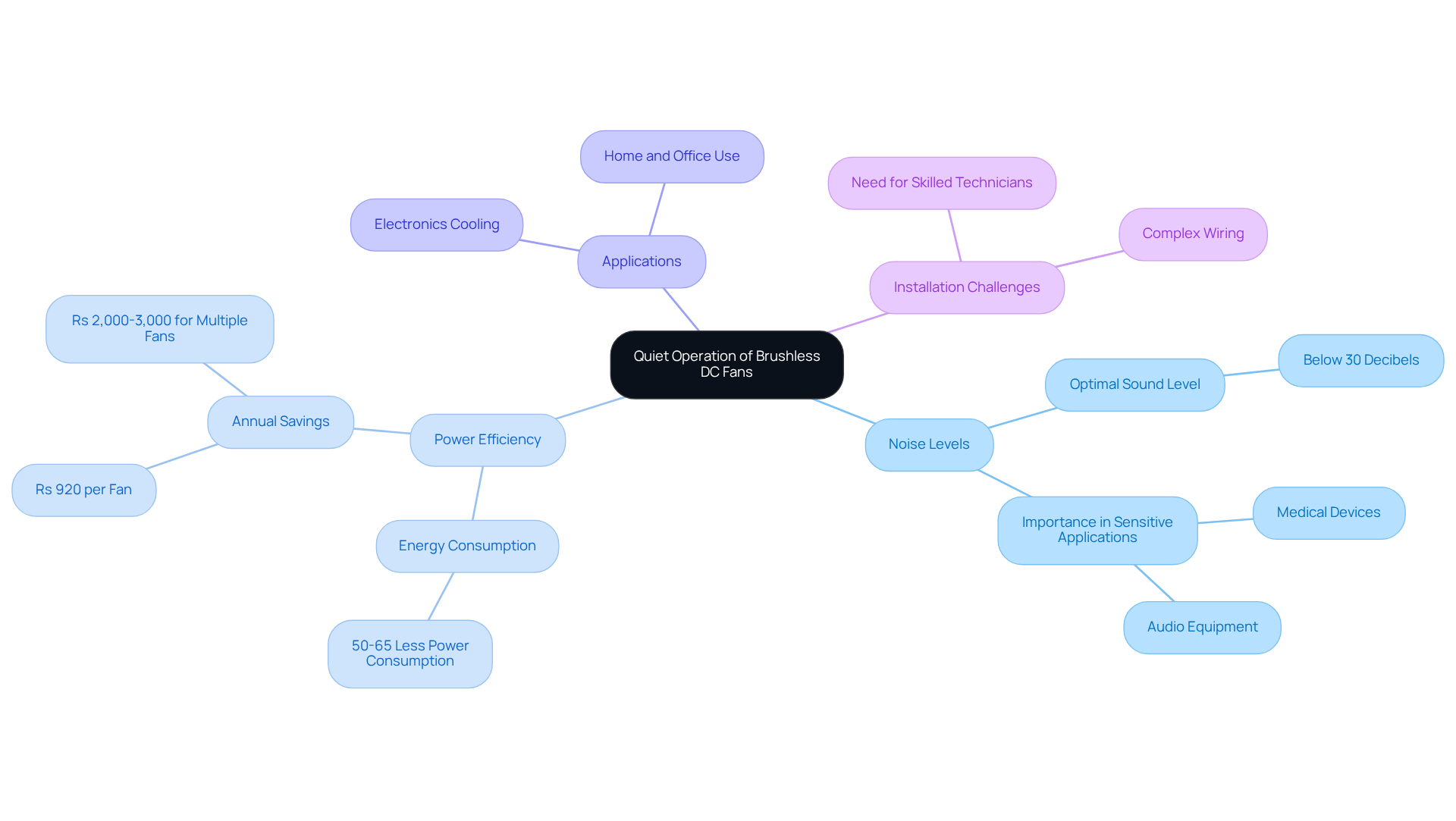
Longevity: Enhance Reliability with Durable Brushless DC Fans
are , often surpassing 20,000 hours of operation, with the potential to endure tens of thousands to hundreds of thousands of hours under optimal conditions. This that of brushed motors, which typically operate between 1,000 to 5,000 hours.
The absence of brushes reduces wear and tear, resulting in fewer replacements and considerably lower . Indeed, can be reduced by 30% to 50% compared to traditional fans.
Although the initial investment for is generally 20% to 40% higher than for their brushed counterparts, the render them a prudent choice. This durability not only guarantees reliability but also translates into consistent performance over time, which is crucial for mission-critical applications.
For instance, a manufacturer reported a 25% decrease in sudden shutdown incidents following the in their fan systems. Such advancements underscore the significance of DC motors as a seeking efficient and durable .
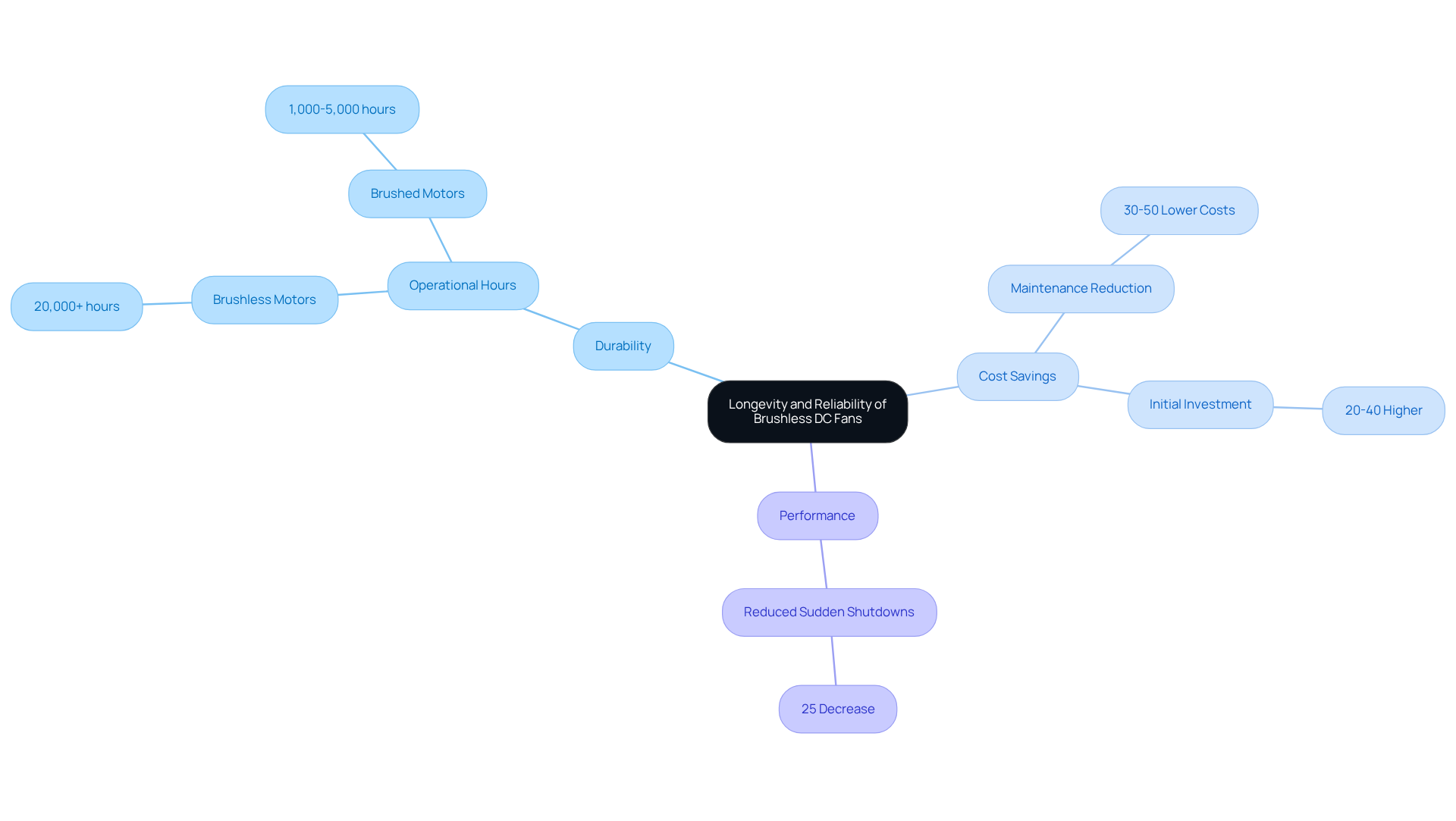
Compact Design: Optimize Space with Small Brushless DC Fans
The compact design of from Gagner-Toomey Associates significantly enhances . Available in various sizes, these devices are ideal for scenarios where space is at a premium, particularly within the electronics and automotive sectors.
By integrating smaller ventilation devices, engineers can achieve more efficient designs that improve airflow and cooling without sacrificing performance. This adaptability proves especially advantageous in portable devices and densely packed systems, where every millimeter is crucial.
As the world’s largest producer of standard and custom air-movers, Gagner-Toomey Associates is strategically positioned to meet the growing demand for , underscoring the importance of in modern electronics.
Expert insights indicate that the trend toward is driving the adoption of these , which provide while maintaining aesthetic appeal.
Ultimately, the integration of small brushless DC fans not only optimizes space but also of electronic designs.
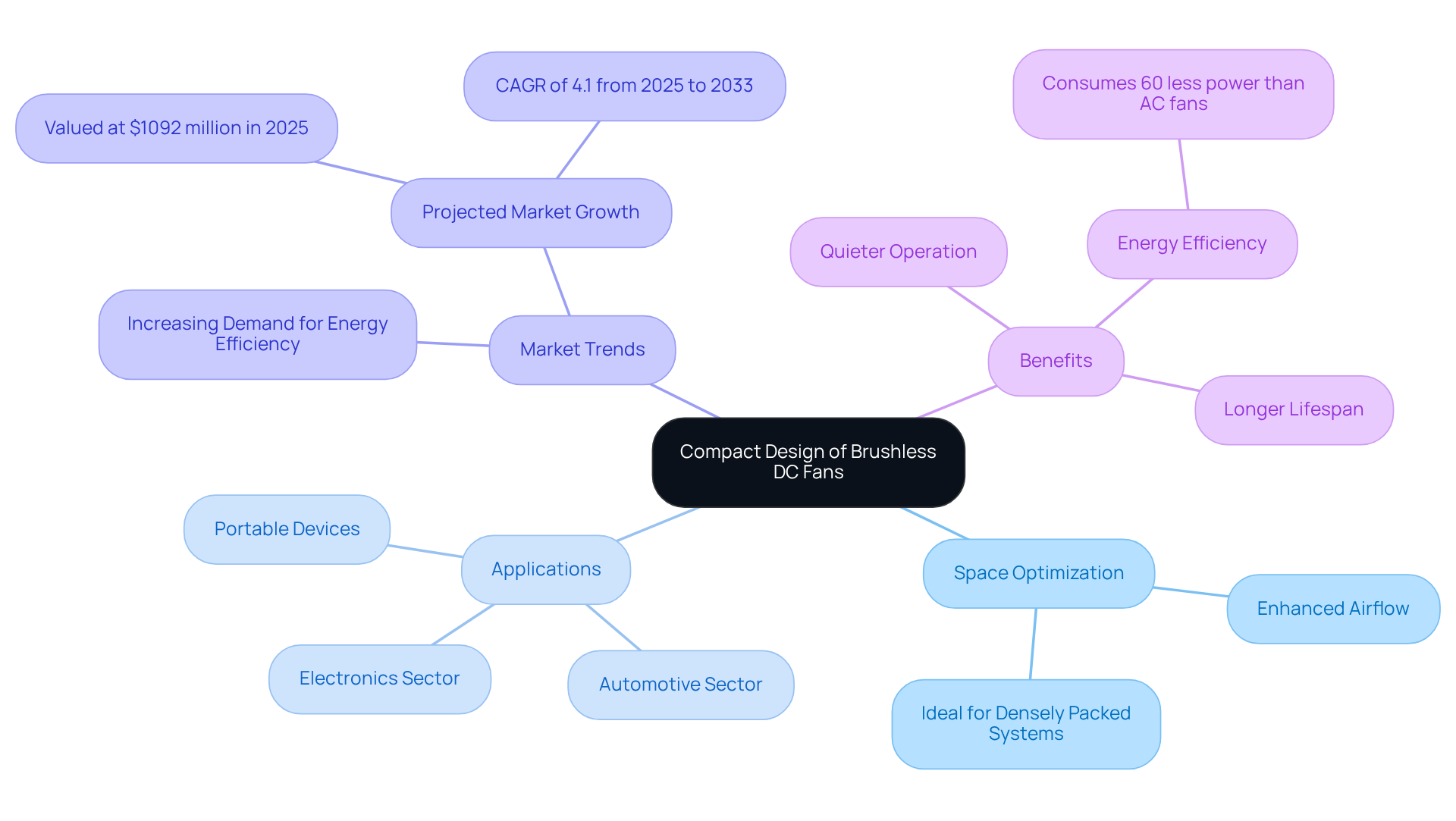
Versatility: Adapt Brushless DC Fans for Multiple Applications
exhibit remarkable adaptability, making them suitable for a , including consumer electronics and industrial machinery. Their allows engineers to tailor these devices to meet specific needs, whether it’s minimizing heat in high-performance computers or facilitating ventilation in enclosures. This adaptability not only addresses unique engineering challenges but also of designs.
For instance, in consumer electronics, these devices are increasingly favored for their , consuming up to 60% less power than conventional AC units, which is particularly advantageous in . In industrial contexts, their reliability and low maintenance requirements make them a preferred choice for critical , ensuring optimal machinery performance.
As the demand for energy-saving technologies rises, the integration of brushless DC fans is increasing, underscoring their vital role in modern electronics design. Notably, the DC cooling device market is , with a compound annual growth rate (CAGR) of 6.6% from 2025 to 2030, highlighting the increasing importance of these devices within the sector.
Moreover, their use in medical equipment underscores their reliability, demonstrating their versatility across multiple sectors. According to PBI Analysts, the market is witnessing robust growth, propelled by and escalating power costs, further reinforcing the transition toward brushless DC fans.
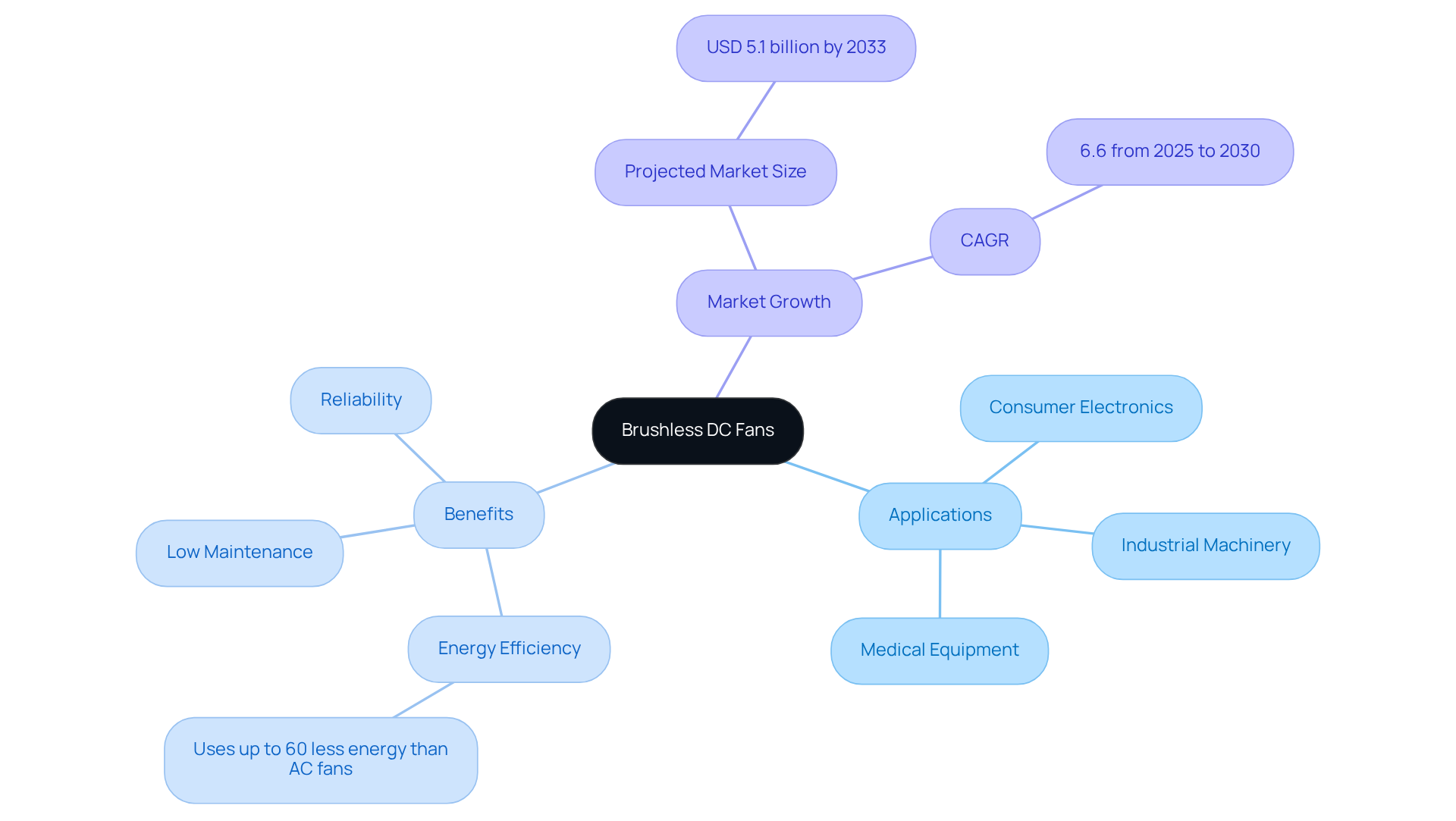
Improved Thermal Management: Maintain Optimal Temperatures with Brushless DC Fans
The effective relies heavily on the use of a . By delivering consistent airflow, these devices efficiently disperse the heat generated by components, thereby preventing overheating and ensuring . This capability is vital for maintaining , which directly influences the of electronic devices.
In high-performance applications, where excessive heat can lead to , the importance of a brushless DC fan becomes even more pronounced. For instance, in data centers, the integration of brushless DC fans is essential for managing the substantial heat produced by closely positioned electronic components, thereby .
Furthermore, expert opinions underscore that not only but also boosts , solidifying the position of DC motors as a preferred choice in modern electronics design.
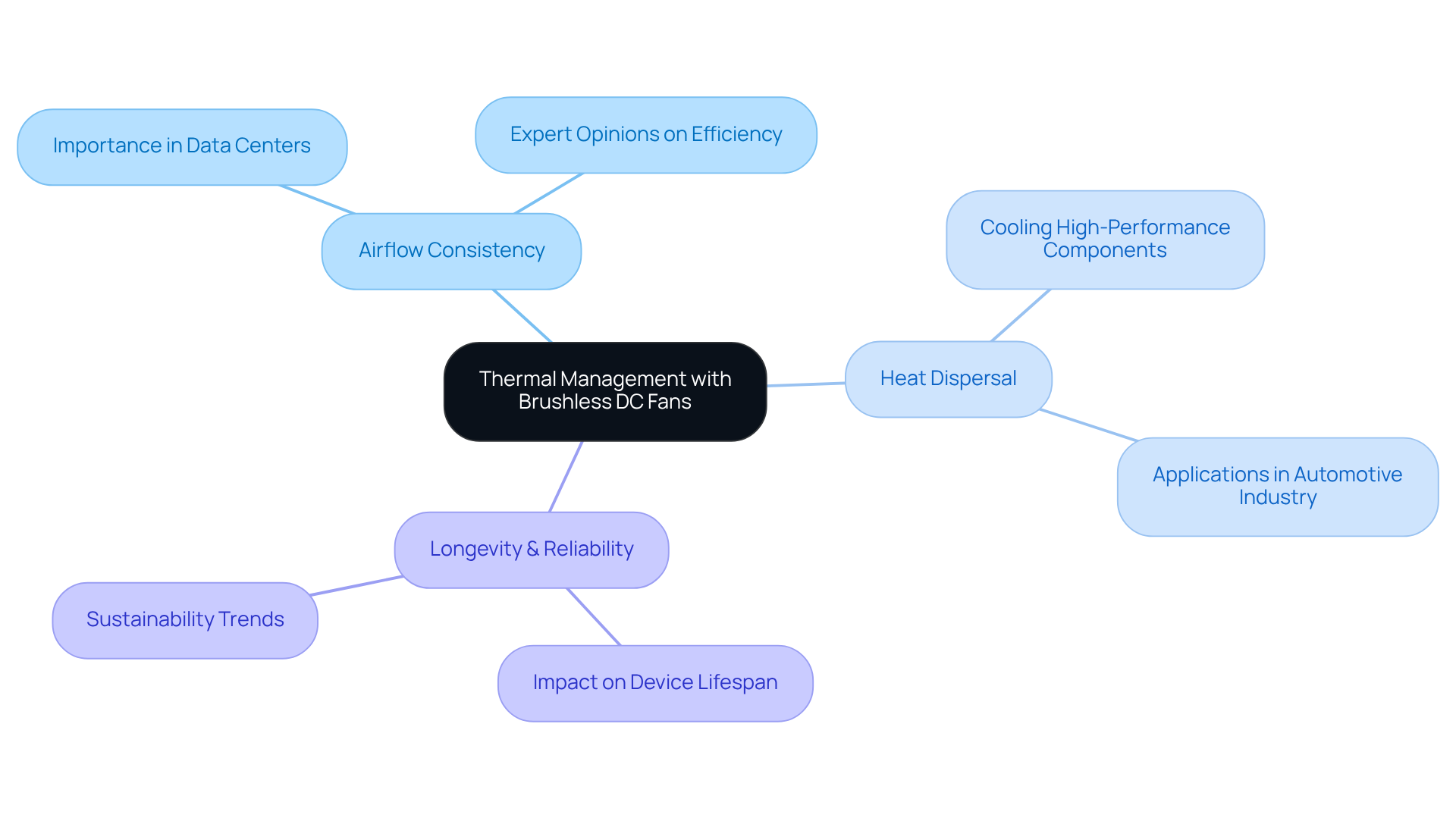
Ease of Integration: Simplify Installation with Brushless DC Fans
Incorporating into electronic designs presents an exceptionally due to their standardized dimensions and versatile mounting options. Many models come equipped with pre-wired connectors, facilitating swift and . This streamlined integration empowers engineers to focus on other , thereby significantly reducing overall .
Furthermore, the with various control systems enhances the integration process, positioning brushless DC fans as a .
The projected of ₹1,226,400 from , coupled with their compared to conventional motors, further underscores their practicality and efficiency in modern electronics design.
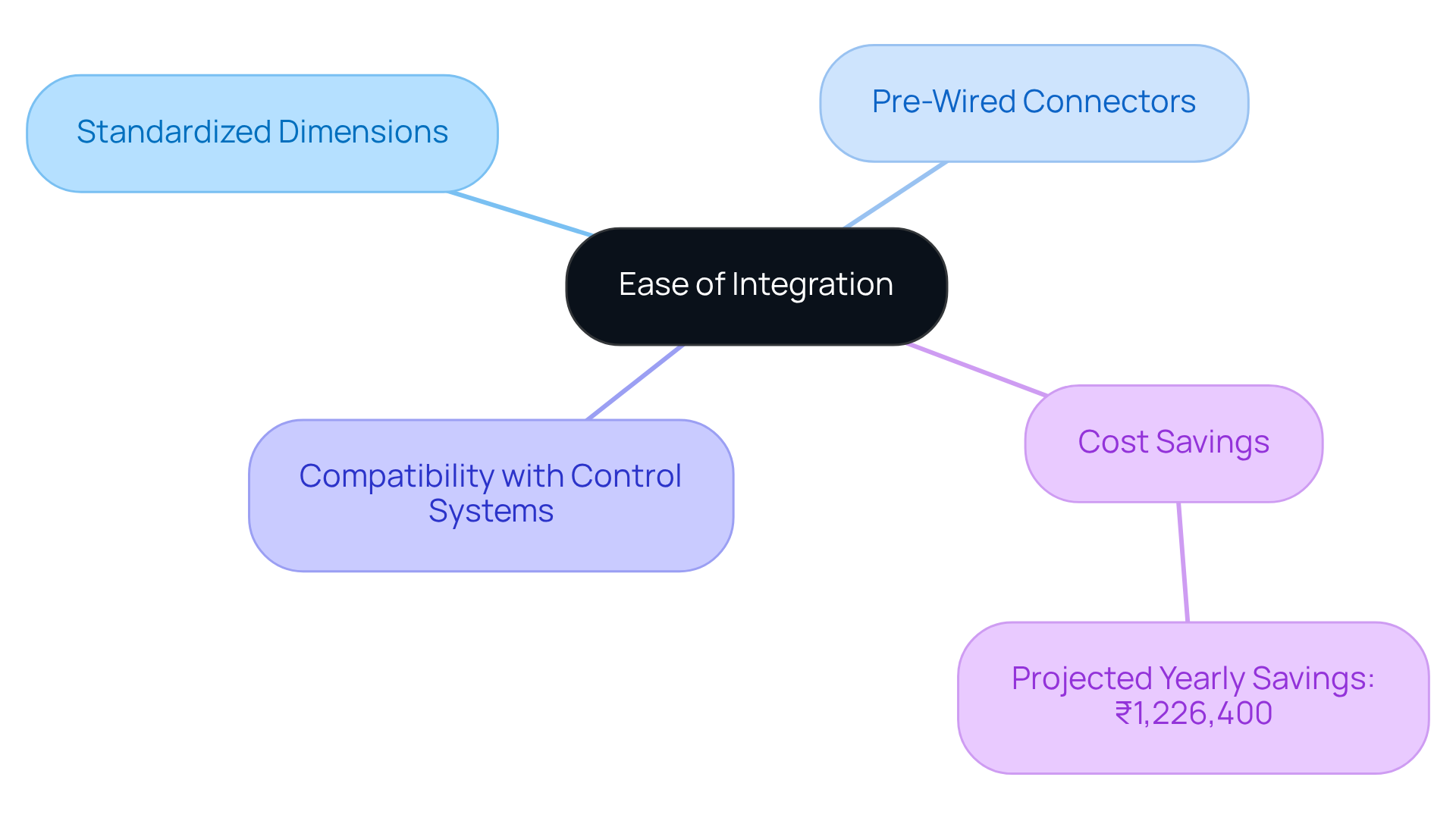
Advanced Control Options: Optimize Performance with Brushless DC Fans
s present that empower engineers to fine-tune functionality according to specific application requirements. With features such as , temperature sensing, and , the brushless DC fan facilitates and noise levels. By leveraging these control capabilities, of the brushless DC fan to meet system demands, thereby . This degree of control is particularly beneficial in scenarios where .
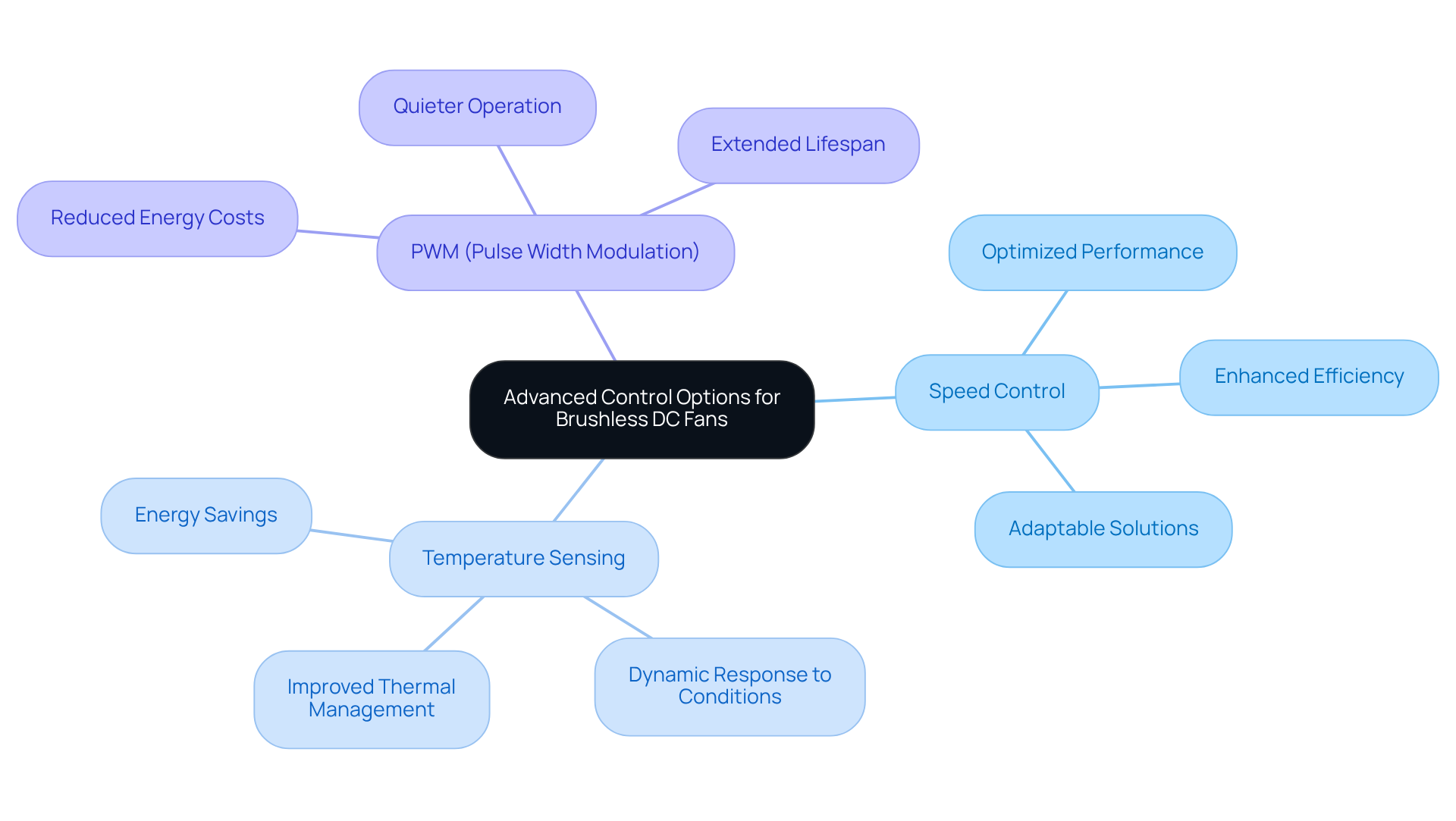
Cost-Effectiveness: Achieve Performance Without Breaking the Budget with Brushless DC Fans
The brushless DC fan units deliver exceptional performance at a fraction of the cost typically associated with . Their energy efficiency allows for compared to conventional AC motor devices, leading to significant operational savings.
For instance, while a traditional device operates at 85 Watts, a DC motor model runs at merely 35 Watts, resulting in an estimated annual electricity cost of ₹1,073,100 versus ₹2,850 for standard models. This considerable difference not only enhances budget management but also ensures across diverse electronic applications.
By investing in DC motors, engineers can reap the dual benefits of and , with a payback period estimated at approximately 2-3 years. Moreover, the , underscoring the increasing demand for these .
The rising electricity costs further motivate the adoption of BLDC devices, rendering them an economically sound choice. Additionally, engineers can anticipate by transitioning to a BLDC fan. The integration of intelligent features in these devices also reflects a remarkable trend, providing modern solutions that enhance efficiency and energy management.
This balance of performance and affordability positions brushless DC fans as the optimal choice for engineers seeking .
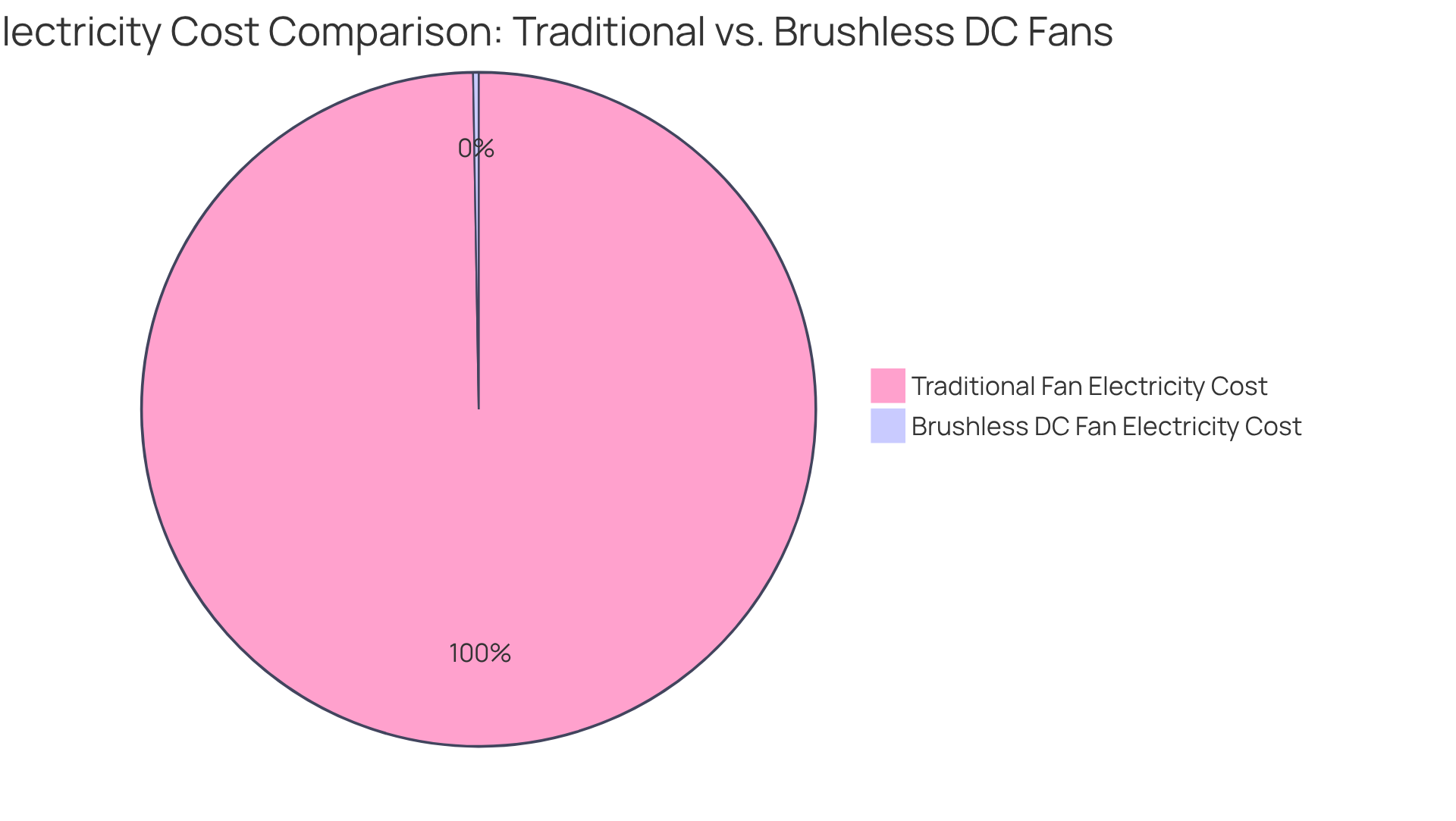
Conclusion
Brushless DC fans signify a transformative advancement in electronics design, delivering a multitude of benefits that enhance performance and efficiency. Their energy-saving capabilities, quiet operation, and remarkable durability establish them as the optimal choice for engineers in search of reliable cooling solutions. By integrating these fans into electronic systems, engineers can not only comply with stringent energy regulations but also elevate user experiences in sensitive applications.
Key insights from the discussion underscore the versatility and adaptability of brushless DC fans, which serve a wide range of applications across consumer electronics, industrial machinery, and medical equipment. Their compact design facilitates space optimization, while advanced control features enable precise airflow management, further boosting system performance. The cost-effectiveness of these fans, combined with their longevity and reduced maintenance requirements, positions them as a prudent investment for contemporary electronics projects.
In conclusion, the adoption of brushless DC fans transcends mere trendiness; it represents a strategic decision that aligns with the escalating demand for energy-efficient and high-performance cooling solutions. As the industry progresses towards sustainable practices, embracing these innovative technologies becomes imperative for engineers and manufacturers alike. By recognizing the advantages of brushless DC fans, stakeholders can ensure their designs are not only effective but also economically viable, paving the way for a more efficient future in electronics.
Frequently Asked Questions
What types of cooling solutions does Gagner-Toomey Associates provide for the electronics industry?
Gagner-Toomey Associates offers innovative cooling solutions including brushless DC fans and a wide range of thermal management solutions, featuring both standard and custom air-movers such as DC input tube axial units and centrifugal blowers.
What are the benefits of using brushless DC fans in electronic systems?
Brushless DC fans are highly energy-efficient, consuming significantly less power than conventional AC devices, which leads to lower operational costs and a reduced carbon footprint. They also help engineers design systems that comply with energy regulations while enhancing overall performance.
How do brushless DC fans contribute to noise reduction in sensitive electronics applications?
Brushless DC fans operate silently compared to conventional fans, making them ideal for sensitive applications like medical devices and audio equipment that require low sound levels. They can achieve noise levels below 30 decibels, significantly improving user experience.
What is the power consumption difference between brushless DC fans and traditional ceiling units?
Brushless DC fans consume 50-65% less power than traditional ceiling units, making them a more energy-efficient choice for various applications.
What challenges might arise when adopting brushless DC fan technology?
A potential challenge when adopting brushless DC fans is sourcing skilled technicians for installation, which should be considered alongside the benefits of the technology.

